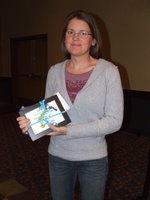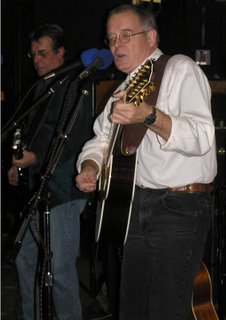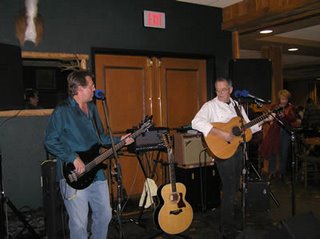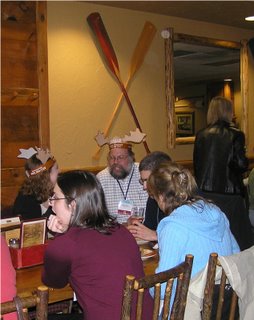Notable Books
Presented by: Helen Androski, Beverly Wees, James Gollata, Gary Warren Niebuhr
Gary:
The Assasin's Gate - Packer, George
War story - set in "occupied" Iraq. Author shows slant in first sentence.
What do human rights have to do with Nat Security?
What should US do with threats no one addresses?
Limits of sovereignty
Democracy by force?
Whose responsibility is defeated country aftwards?
Packer makes it clear w/in Bush administration there was no clear agreement what to do after 9/11. But there
was a small group who had idea that we had right to do anything.
The book shows how sad it is who we rely on for advice--
Not a novelist approach, more journalistic. Underlying conclusion: "why did the US invade Iraq? Still not sure"
Elia Kazan - Schickel, Richard
Why Kazan important? because of his role in the red scare. Lot of group theatres full of stalinists. Kazan suffered for testifying against Stalinists in the arts. One man able to have both hollywood and broadway success.
Kazan an angry person which affected everything he did. Missing some personal insights explaining why Kazan is like he is. Schickel refers often to a different Kazan bio.
Hummingbird's Daughter - Urrea, Luis Alberto
South & centeral american writer & setting. Mexican unification process.
Hard to understand & believe all the mystical spiritual stuff.
Fictionalization of Terecita's life.
When Terecita's sainthood, and healing gifts gain her sway over people, government decides she must be elimiated.
Easy to lose oneself in the richness of the narrative.
Beverly:
Extremely Loud and Incredibly Close - Foer, Jonathan Safran
post-9/11 fiction
narrated by 9-yr old, Oscar.
Lost his father in 9/11
Dresses in white, sprinkles french phrases, and other oddities.
Oscar finds a envelope with a key and he tries to discover where it goes.
Multimedia book--pictures, blank pages for mute grandpa, flip-pages.
Orientalist - Reiss, Tom
Spellbind, but challenging book
Bio of a Jew who transforms self into Muslim prince, and best-seller in Nazi Germany.
When moving from Russia, went through Istanbul and fell in love with Islam and desert life. Converted at 17.
Seemed really astonished that he couldn't get published anymore in Germany. European Oscar Wilde.
Lots of political movements going on in the book.
Odd character.
Sometimes author goes off track into political & historical detail.
Midnight at the Dragon Cafe - Bates, Judy Fong
Chinese immagrant girl who comes to Canada in 1874. Bright girl, well like, good at school. Home life. Lots of secrets, and no one to talk to.
Narrator's voice is young, innocent despite the darker secrets and issues.
Helen:
Please Don't Come Back From the Moon - Bakopoulos, Dean
Depressed industrial neighborhood in detroit. Fathers start going out to look for work and not coming back.
Plot and pace meander too much. 1st novel problems. hints of magical realism. hints that fathers really did go to the moon.
Never Let Me Go - Ishiguro, Kazuo
About young girl, Cass at boarding school and her friends.
No parents mentioned. The girls search for where they come from, struggle to find meaning of life before it is over.
Not quite a sci-fi thriller. All set in past -- anachronistically. Brings into focus the poignancy of why should we make friendships etc, when going to end in loss and death.
Gilead - Marilyn Robinson
Whoppping good read even though nothing much happens.
Set in Iowa
Main character (Rev Ames) dying, writes long letter to son whom he won't see grow up.
Story of family history.
Ames has a humble humorous narrative voice. Touches on many great American themes. Exquisite writing.
James:
The Glass Castle -- Walls, Jennette
Autobiographical. Author is gossip columnist for msn.com
Opening sentence show juxtaposition of Jennette driving by her mother who is homeless and picking through garbage. Family dirt poor, father never hold job, very eccentric. Ignore kids, let them grow upon their own.
Well-written. Even humorous, no self-pity.
Saturday - Ian McEwan
Story of a day in the life of Henry Peron(sp?), British neuro-surgeon.
Whole story covers very short time period, but includes plane crashes, car accident, hoodlum attacks, and the power of poetry.
Streets in Their Own Ink - Dybek, Stuart
Poetry collection. Better short story writer than poet. Very dark--both poetry and short stories.











